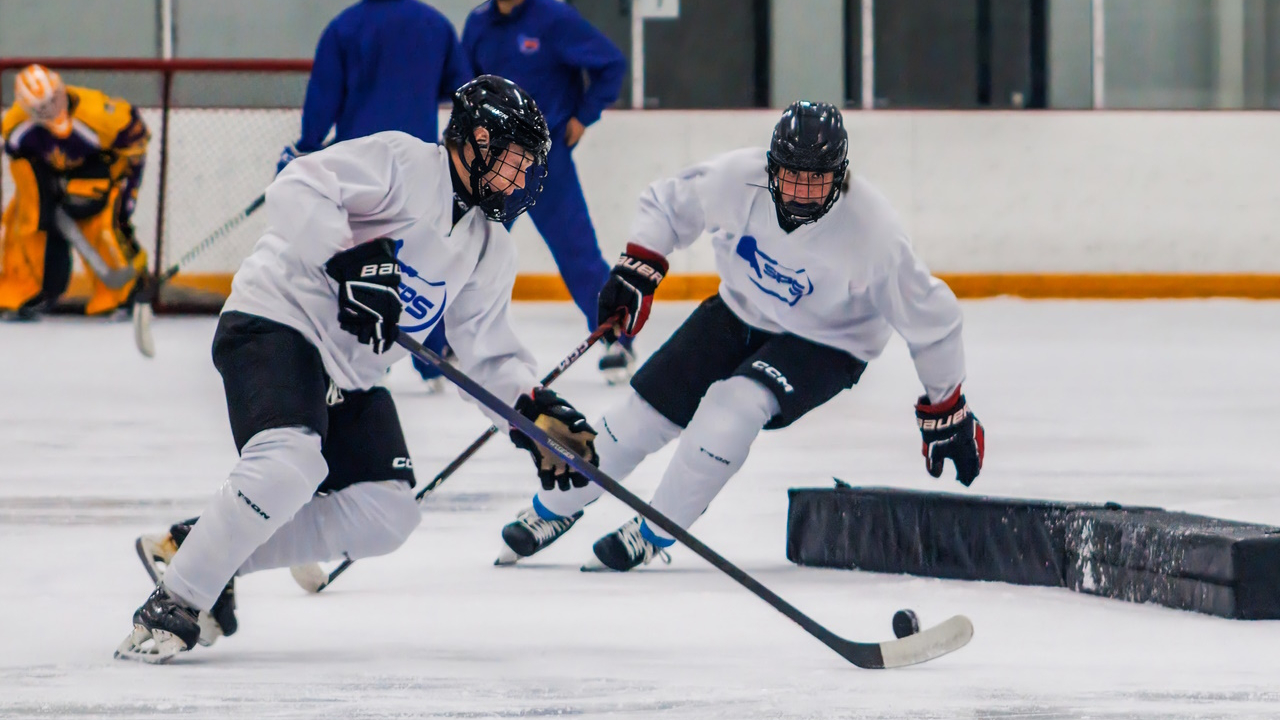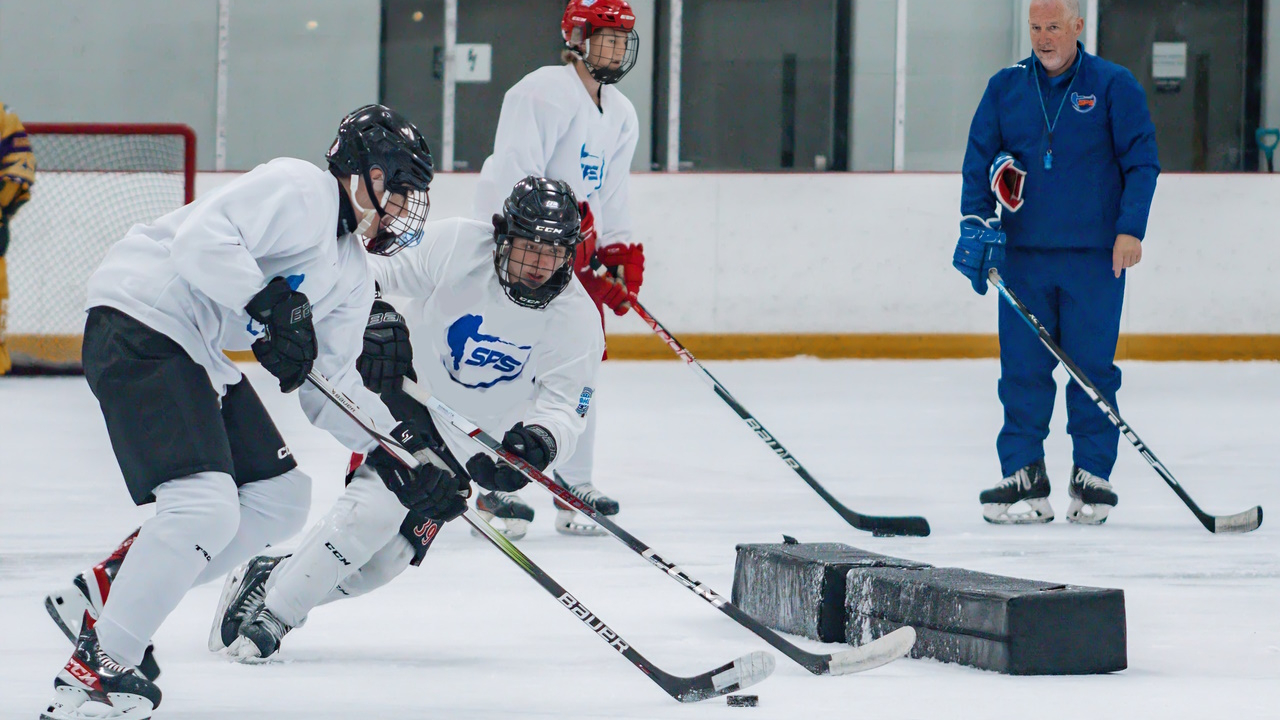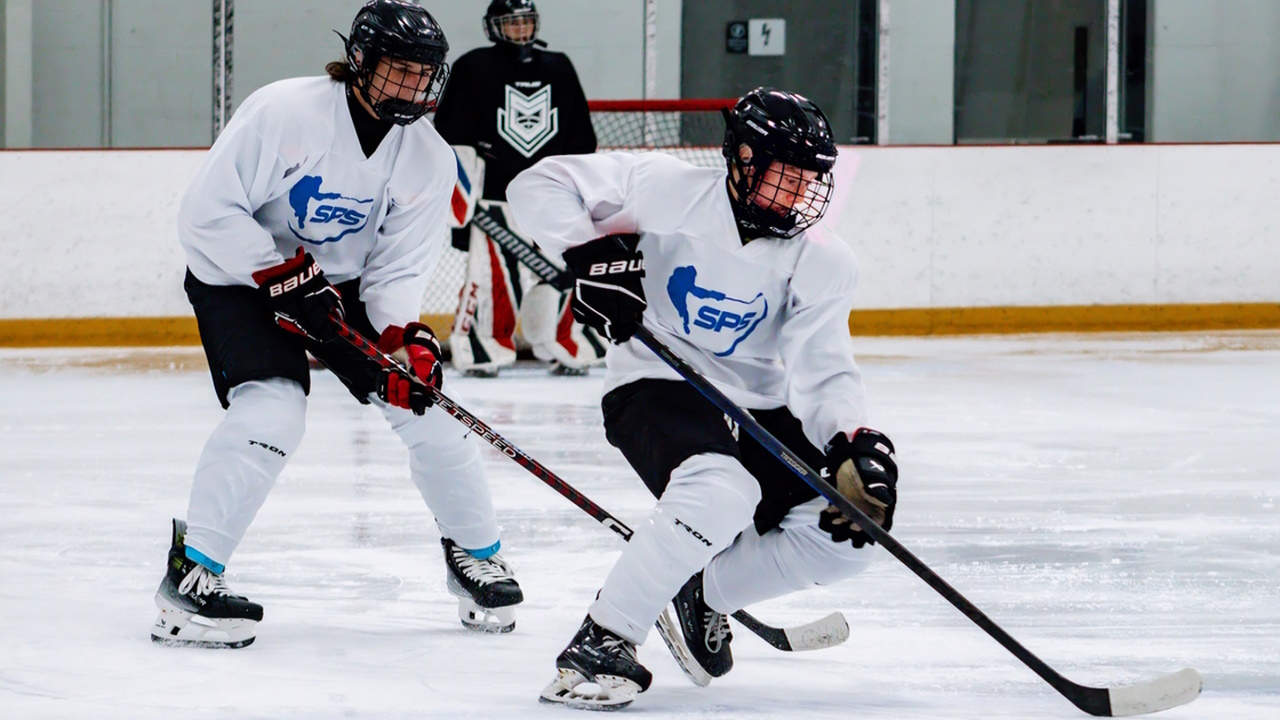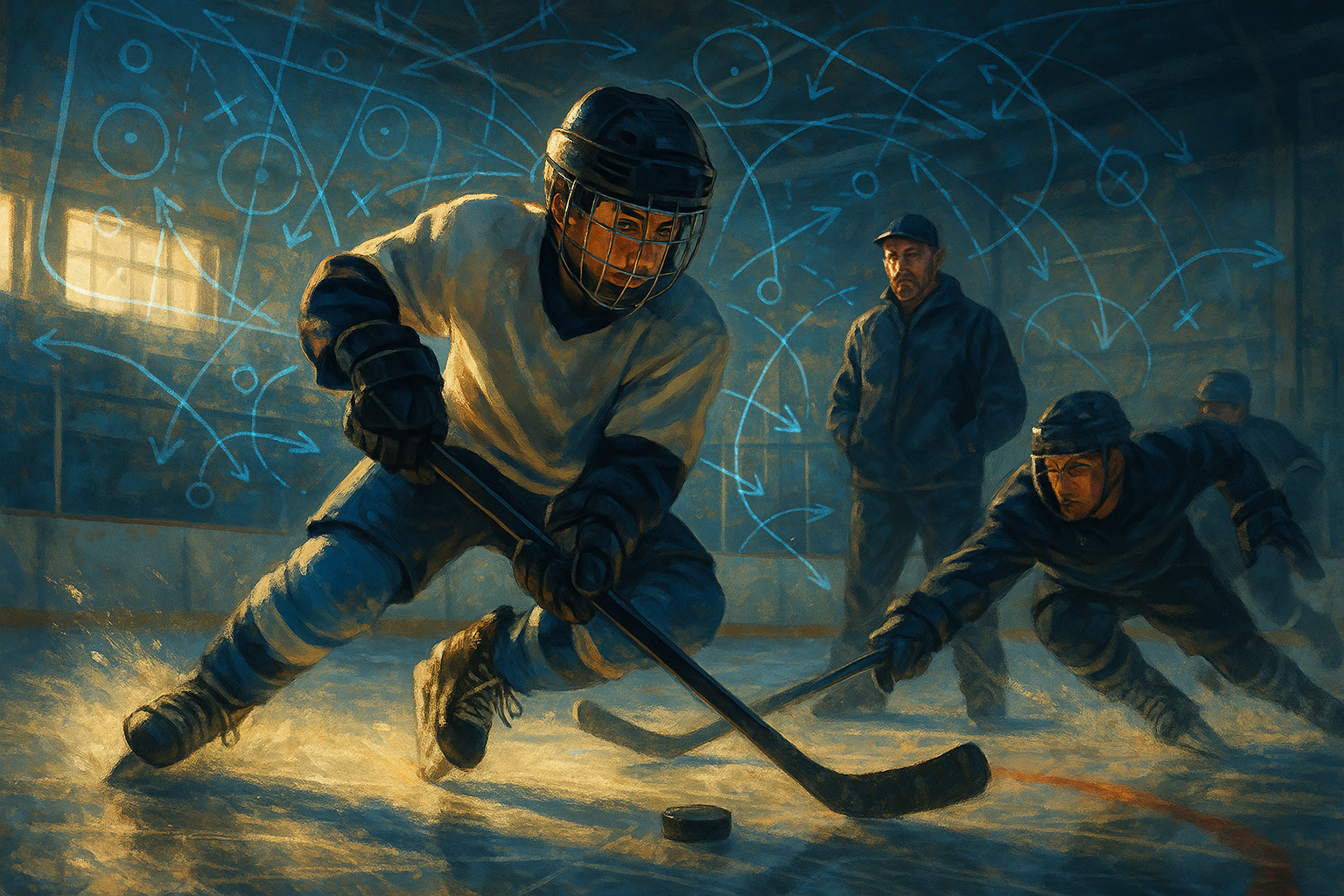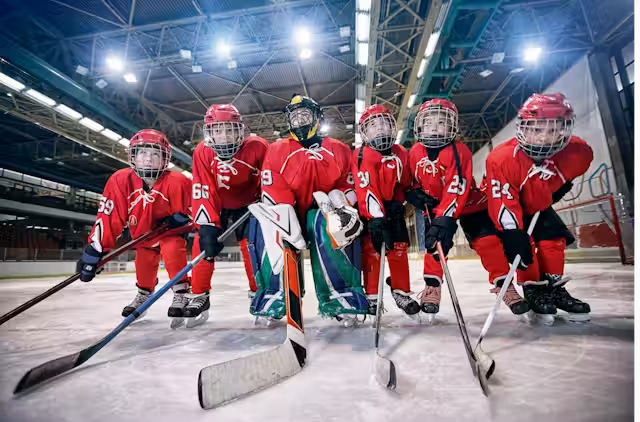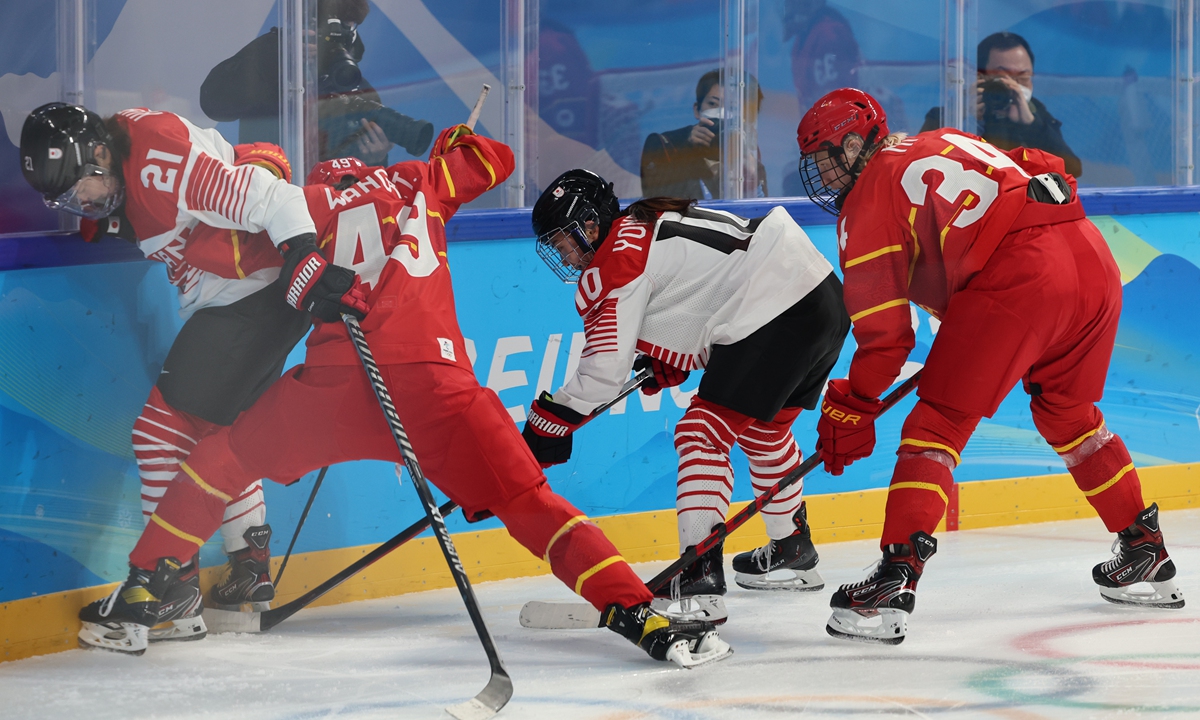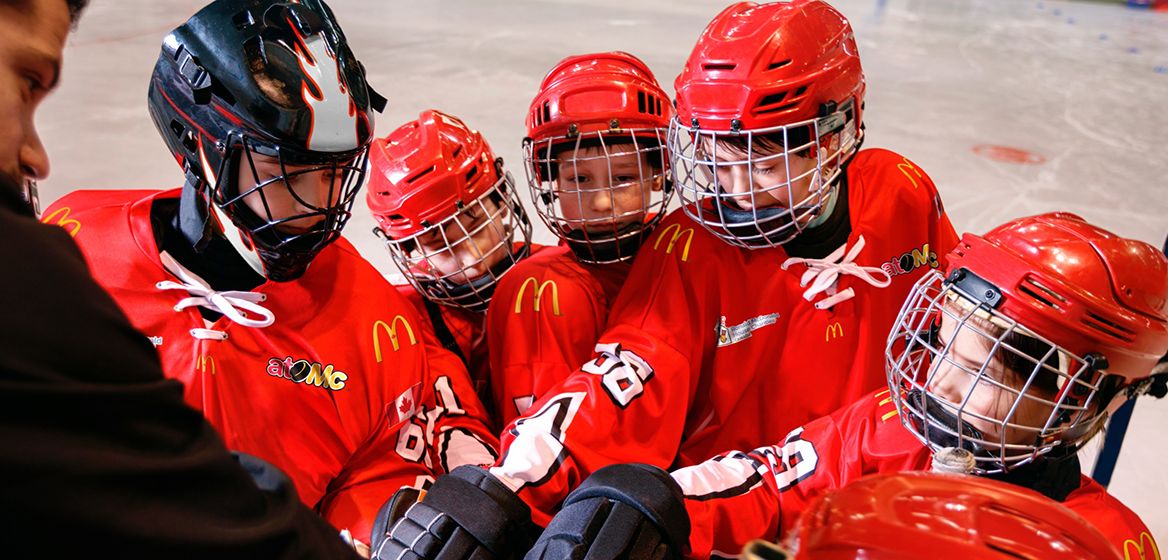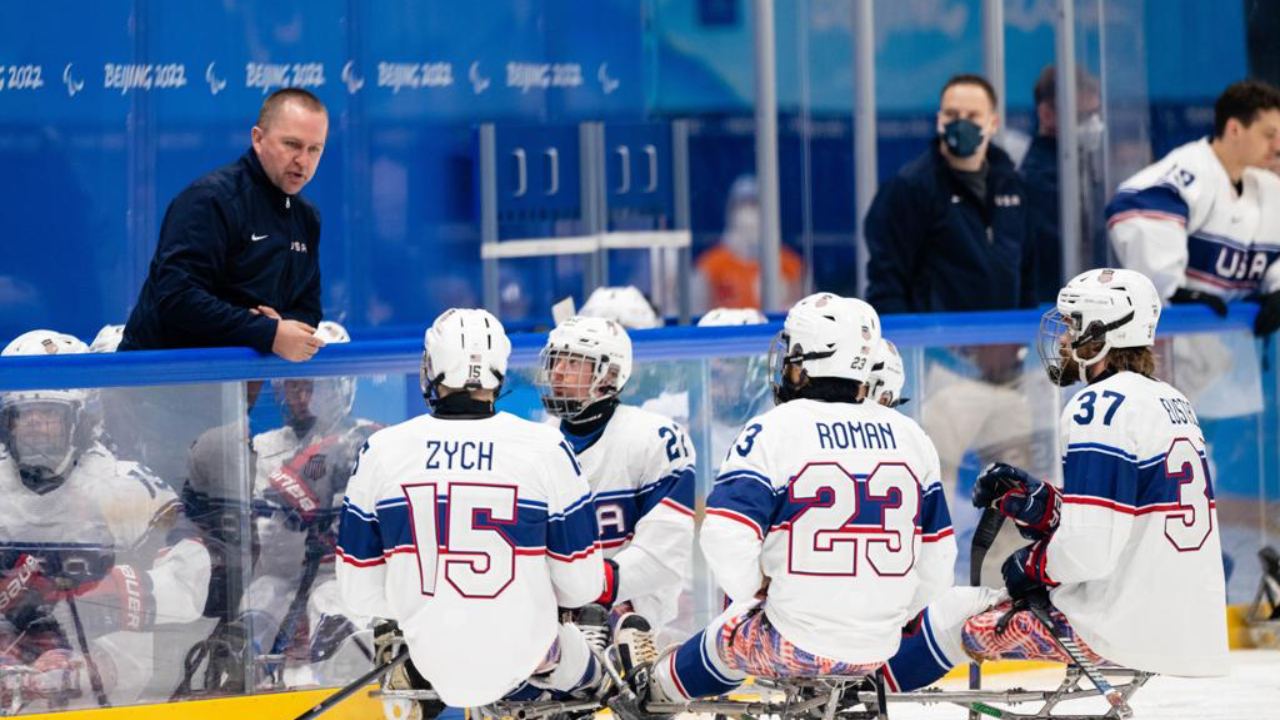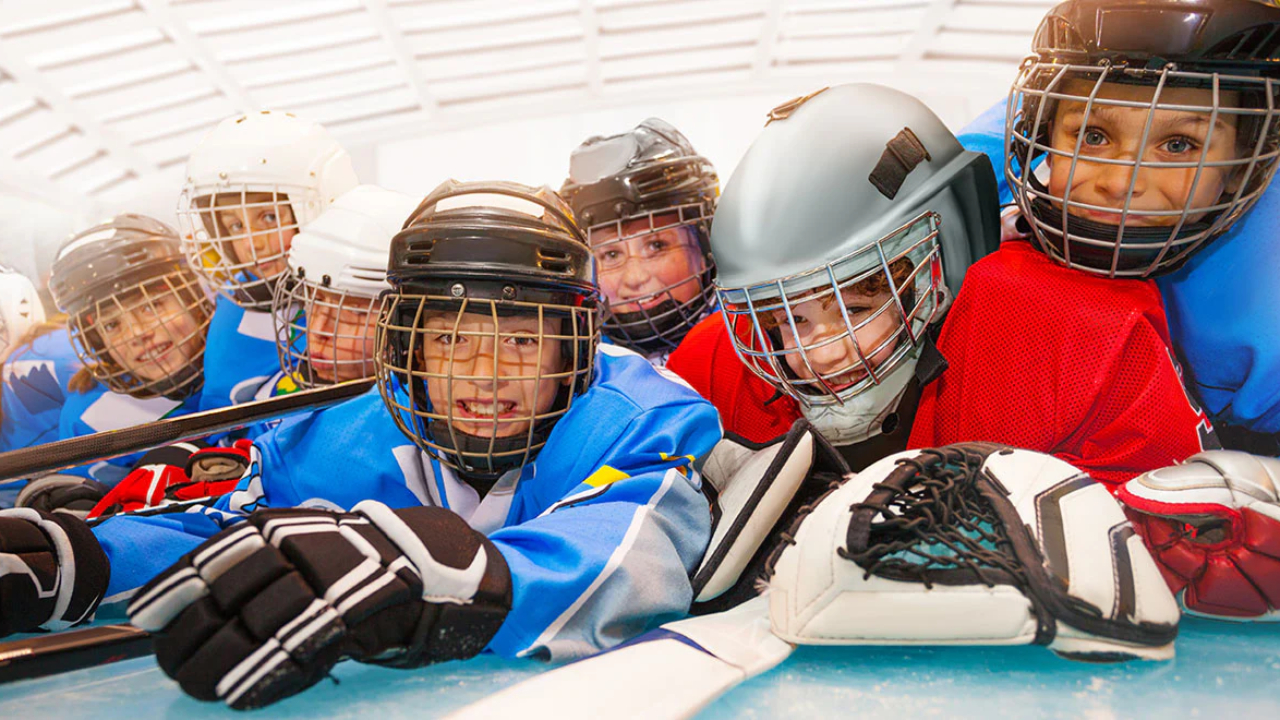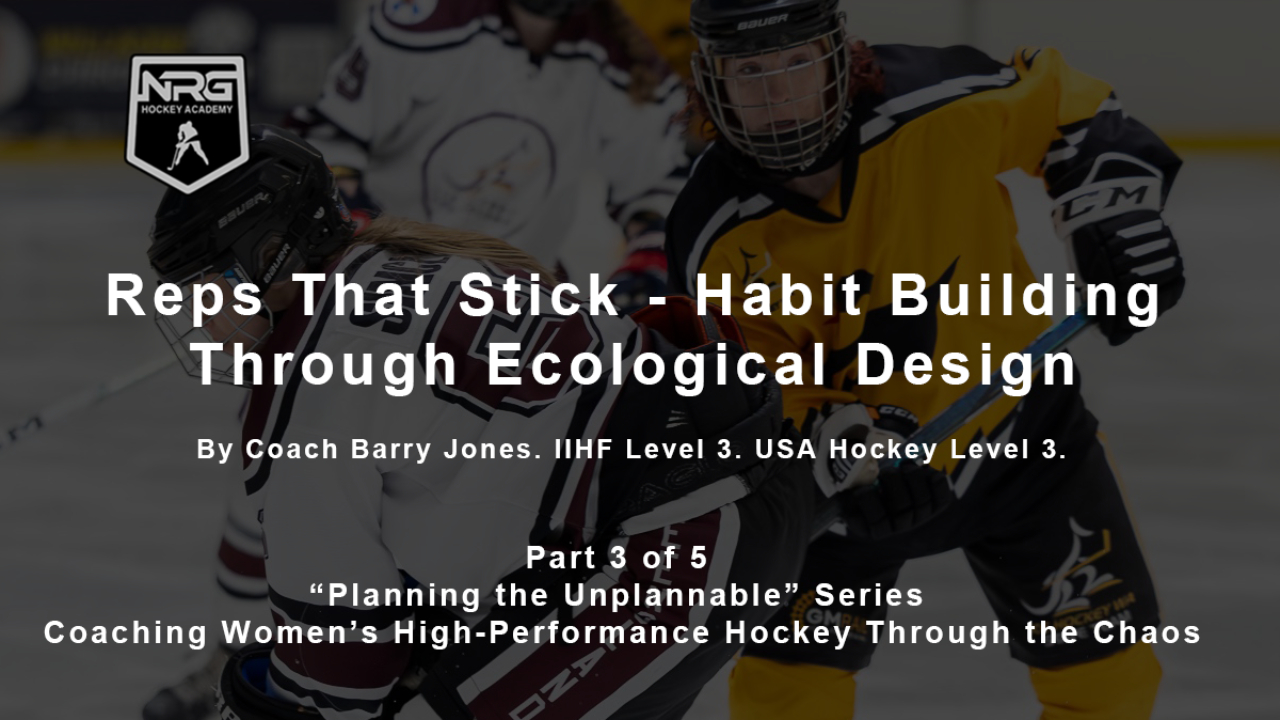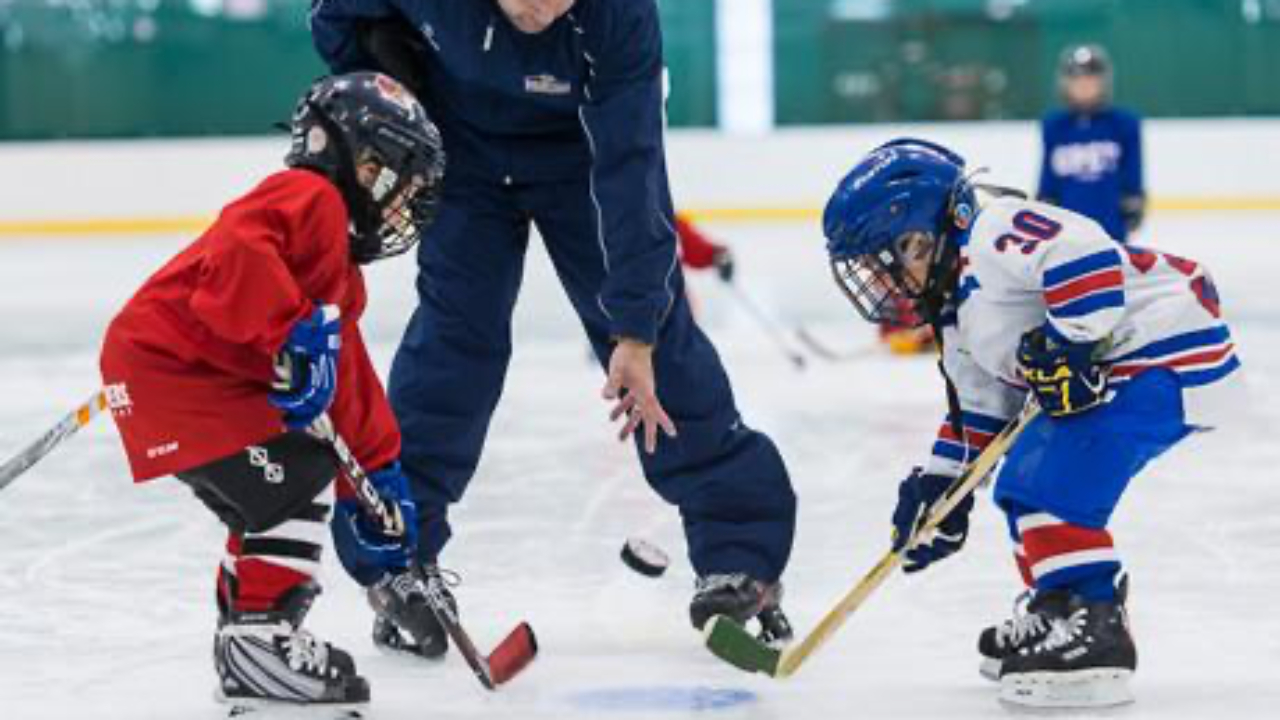
Part 2: The Science Behind Skill, Perception–Action and Sticky Learning
Part 2 of 5 in the “Teaching Through Chaos” Series
By Coach Barry Jones. IIHF Level 3. USA Hockey Level 3.
Skill isn’t something you drill. It’s something you discover.
Ever watch a player who looks elite in practice…
Then disappears under pressure in a real game?
They passed every drill. Executed every rep.
But when the puck dropped, the decision didn’t come.
Why?
Because we taught them to perform a movement.
Not to solve a problem.
Perception–Action Coupling. The Invisible Thread.
In ecological dynamics, we talk about perception–action coupling, and it’s not just theory. It’s the invisible thread that connects all real-world decision making.
Here’s the idea.
• Players don’t first perceive, then decide, then act.
• They perceive through acting. They act through perceiving.
• Seeing and doing are connected. Always.
Think about a forecheck.
A player doesn’t think, “I see a passing lane, I will now attack it.”
They sense the lane as they close the gap. The read and the movement happen together.
So what happens when we separate them in training?
We break the connection.
We train the body… but not the brain.
Affordances. The Game Within the Game.
Every moment in hockey offers affordances, opportunities for action.
A defender’s stick positioning
A loose puck near the wall
A teammate opening up just enough space on the weak side
These aren’t instructions. They’re invitations.
But only athletes attuned to them will act.
That’s where our coaching comes in.
• We don’t just teach “pass the puck.”
• We teach “recognise when the pass is possible, and when it’s not.”
• We build the environment where that recognition happens naturally.
Reading the Ice – Frames of the Game
Hockey is made up of constantly shifting game frames.
Frames are not systems, they’re situational awareness filters.
A smart player is one who can adjust the lens they see the game through.
• Space
• Time
• Pressure
• Support
• Gaps and angles
• Transitions between offense, defence, and loose puck
Each of these is a frame. A situational context.
And each one presents different affordances.
An elite hockey IQ doesn’t come from memorising tactics.
It comes from learning how to detect, understand, and act upon these constantly shifting game contexts.
When we teach through perception-action, we’re not just training the body.
We’re shaping the athlete’s attention.
And attention is the starting point of every intelligent decision.
Sticky Learning vs Short-Term Memory
Let’s be honest, blocked drills feel great.
They look smooth. Players feel confident. Coaches feel in control.
But smooth isn’t sticky.
Smooth is performance.
Sticky is learning.
Sticky learning is what happens when an athlete explores, fails, adjusts, and adapts, inside the chaos.
It’s the kind of learning that sticks, not just for the next rep, but for the next season.
In a traditional model:
• You might run a 5-pass drill until it looks clean.
• But in-game, no one’s counting passes. They’re finding space. Solving puzzles.
In an ecological approach:
• We set up constraints that force decisions.
• We keep perception and action coupled.
• We create opportunities for meaningful failure.
• And through that, we build resilient understanding.
The Science Behind It – Self-Organisation in Dynamical Systems
Dynamical systems theory reminds us:
• Complex systems, like athletes in games, don’t need scripts to learn.
• They self-organise when placed under the right conditions.
• Learning emerges through interacting with the environment, not from a coach’s instructions.
That’s why exploration, explanation.
That’s why struggle is a signal, not a setback.
It also helps explain why “smart” players often emerge from messy, game-like reps…
While “perfect” practice players can crumble under uncertainty.
What This Means for Your Practice Design
Let go of clean. Embrace chaos.
Design reps where the outcome isn’t fixed — it’s earned.
Here’s what that can look like on the ice:
• Instead of isolated passing drills
• Try a small area 3v2 where players must recognise the open option
• Instead of controlled breakouts with no pressure
• Try a half-ice breakout into pressure where players must adapt spacing and timing on the fly
• Instead of clean reps
• Look for messy moments of recognition, problem-solving, and adjustment
That’s sticky. That’s ecological. That’s real development.
Final Thought
If you want smarter players, you need to train smarter situations.
Keep the perception. Keep the decision. Keep the mess.
Let athletes struggle. Let the task teach.
Let the chaos reveal who they’re becoming.
Next up in Blog 3: “Scaling the Game – Small Area Games and Problem Design.”

